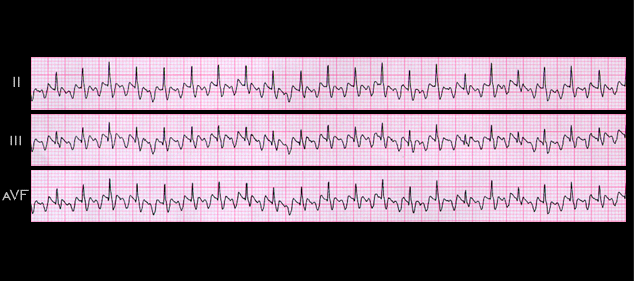Rarely, the flutter rate will exceed 350. This is referred to as type II flutter and suggests a different and possibly smaller re-entry circuit than is present with both the counterclockwise and clockwise forms of type I flutter.

An example of type II flutter is shown here. The tracing is from the 75 year old woman whose ECG demonstrating multifocal atrial tachycardia was shown earlier (page 7.2.35). Now, there is atrial flutter with a flutter rate of 380 and 2:1 AV block resulting in a ventricular rate of 190. It is difficult to determine the polarity of the flutter waves, but they appear to be upright in leads II, III and aVF.
